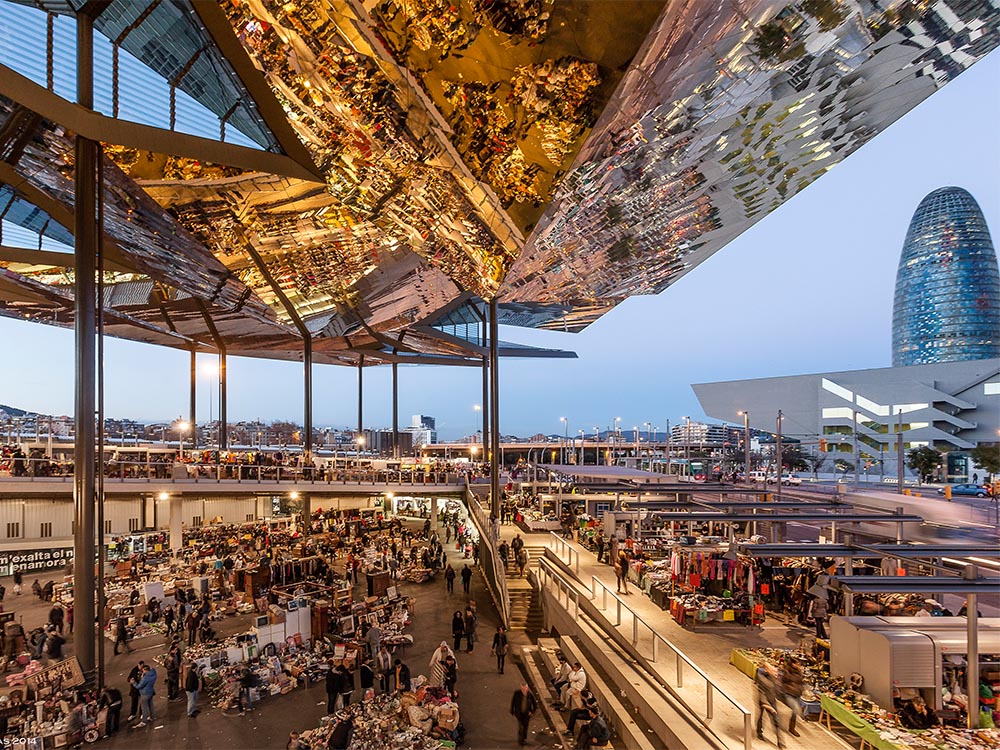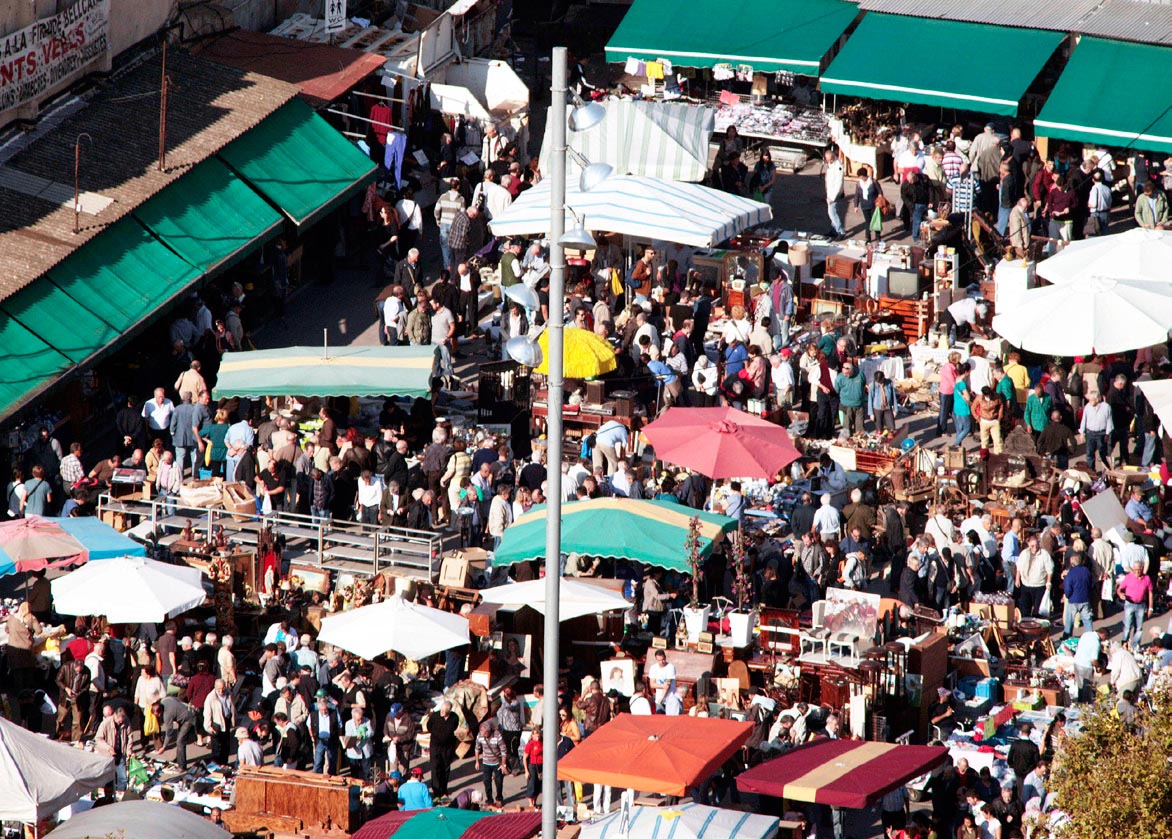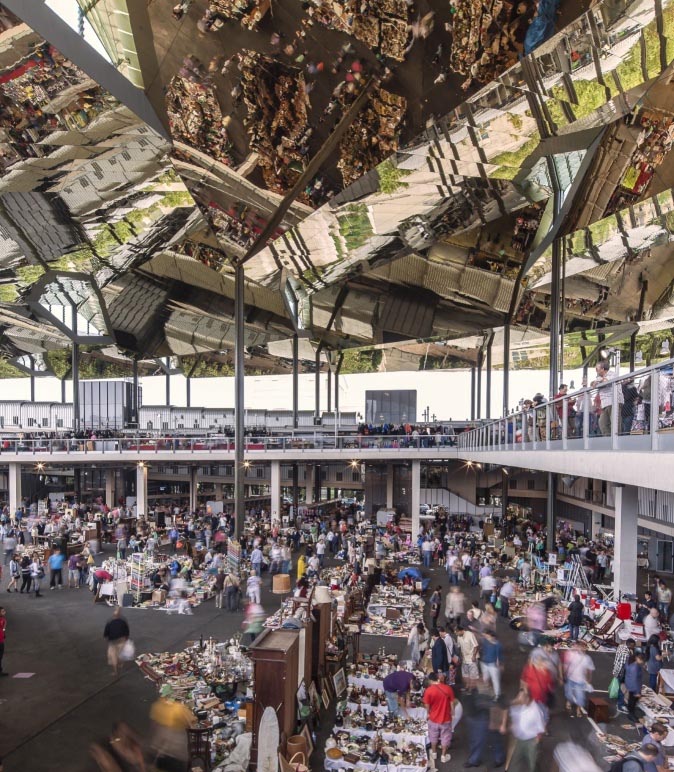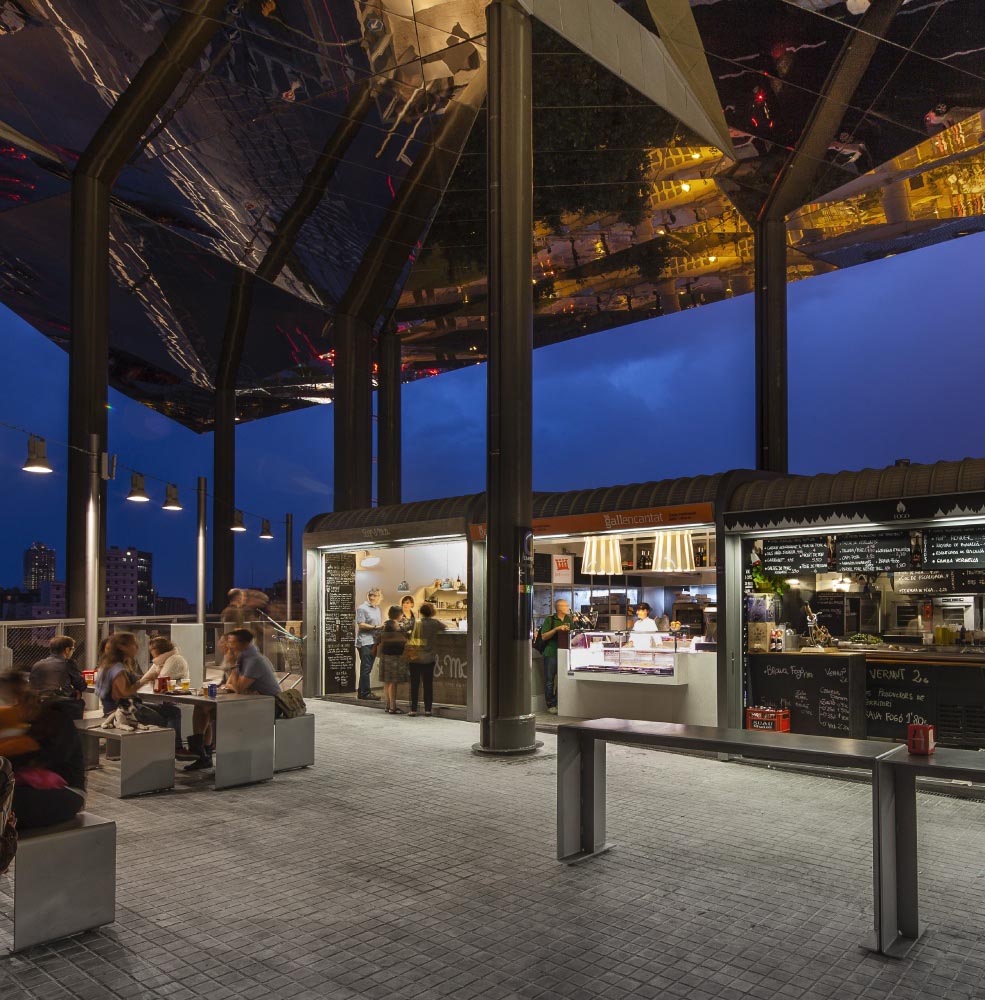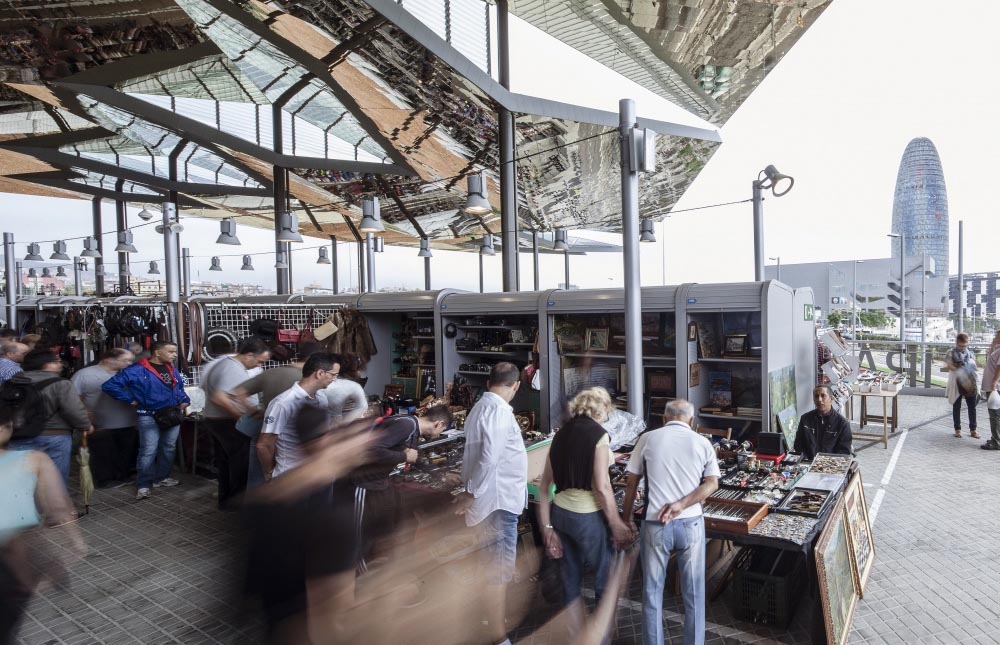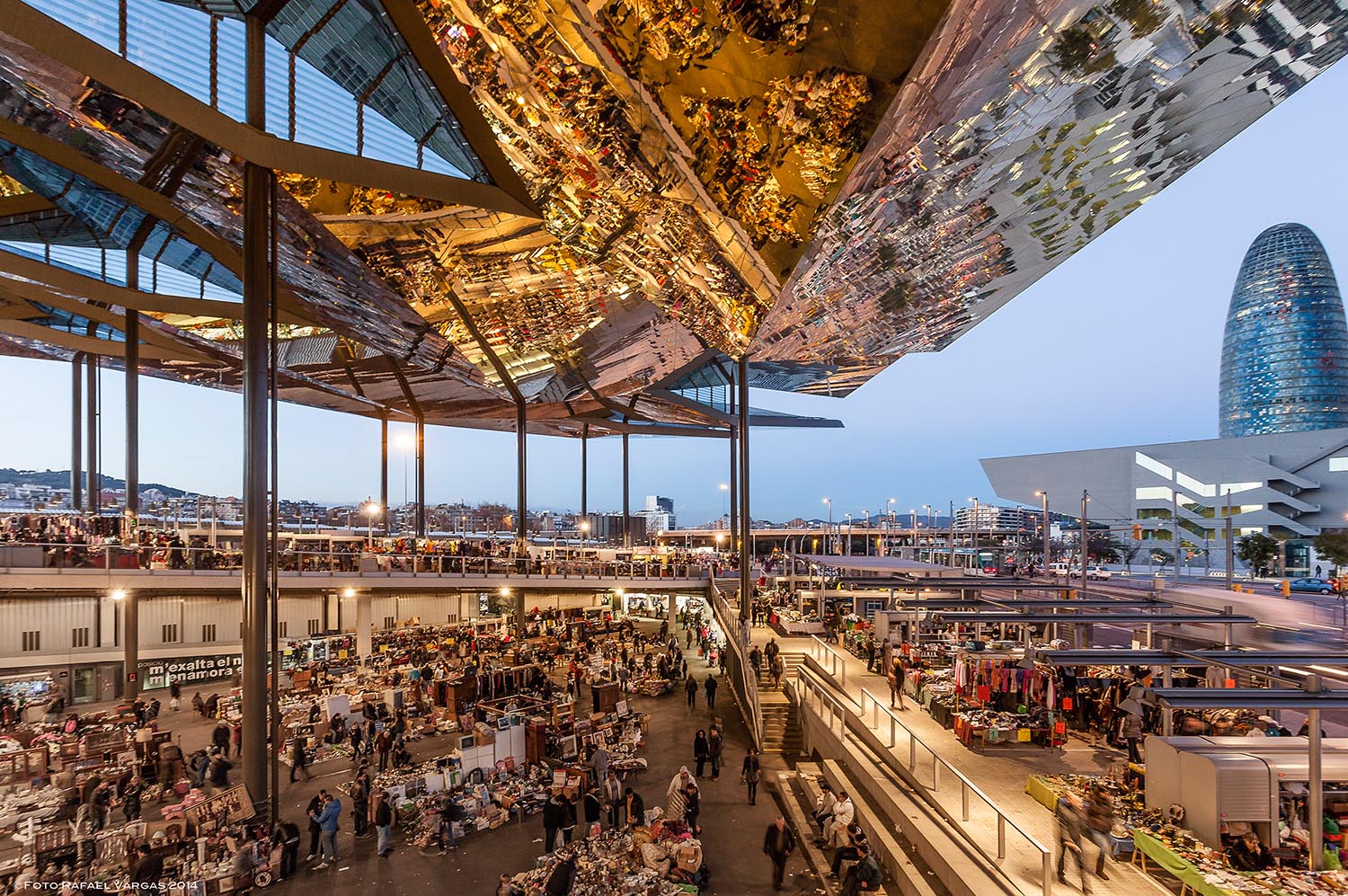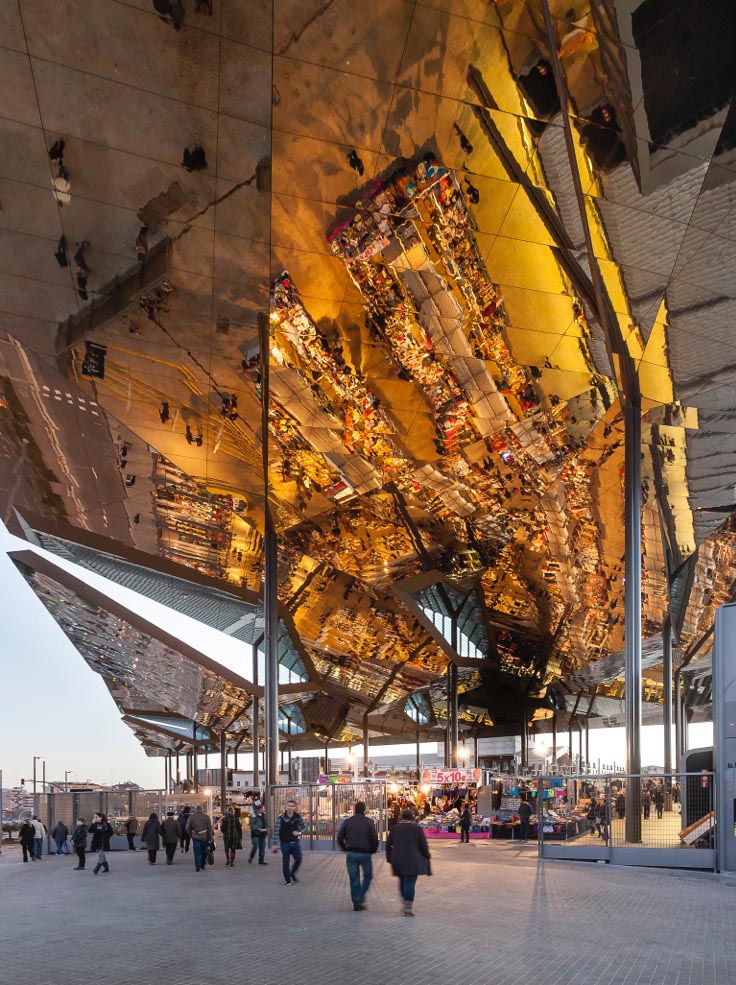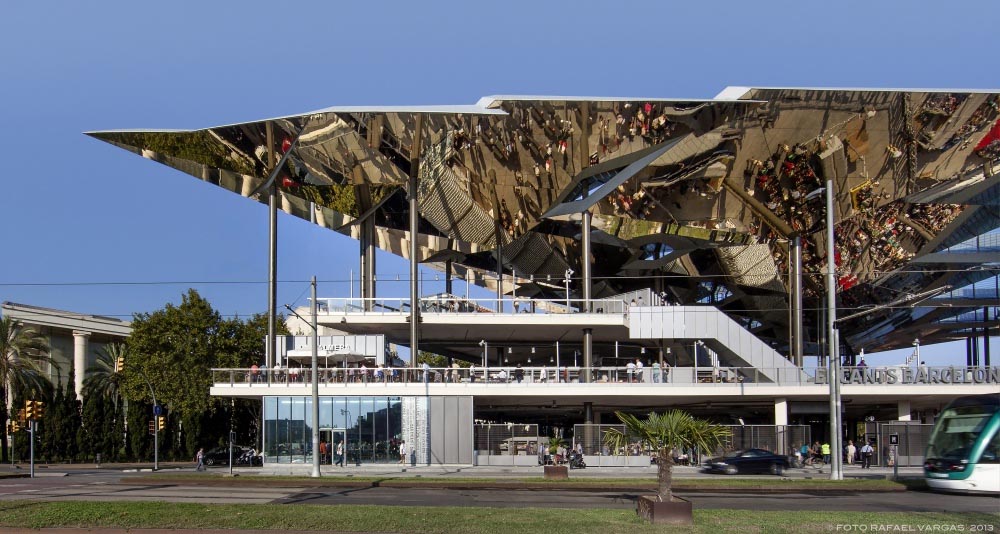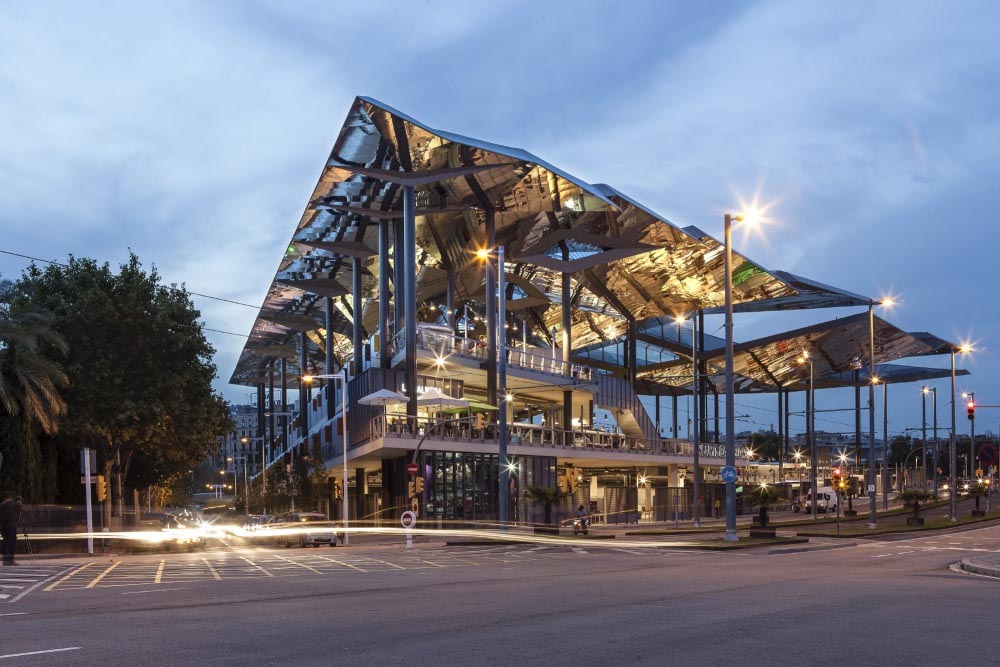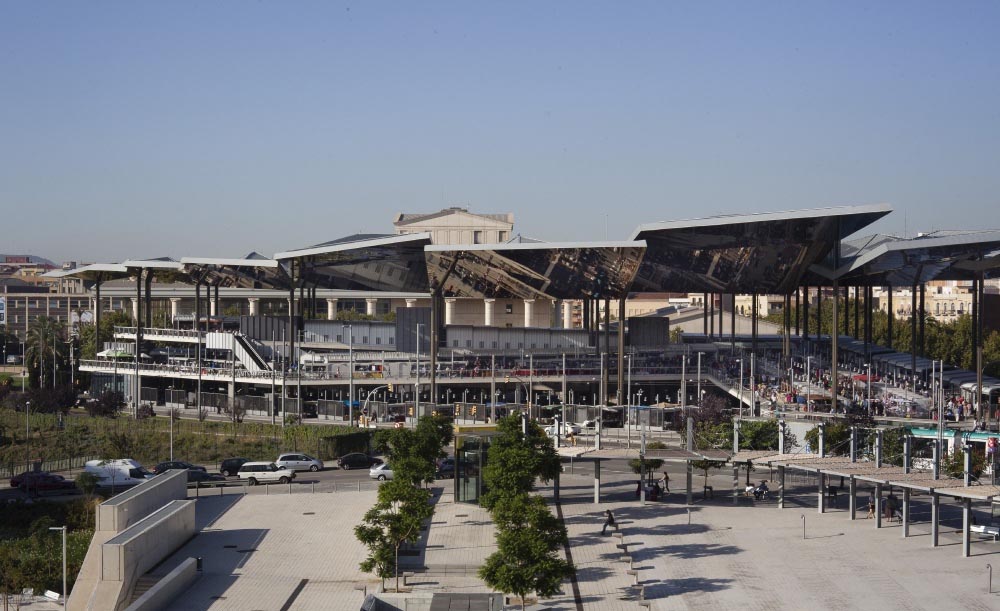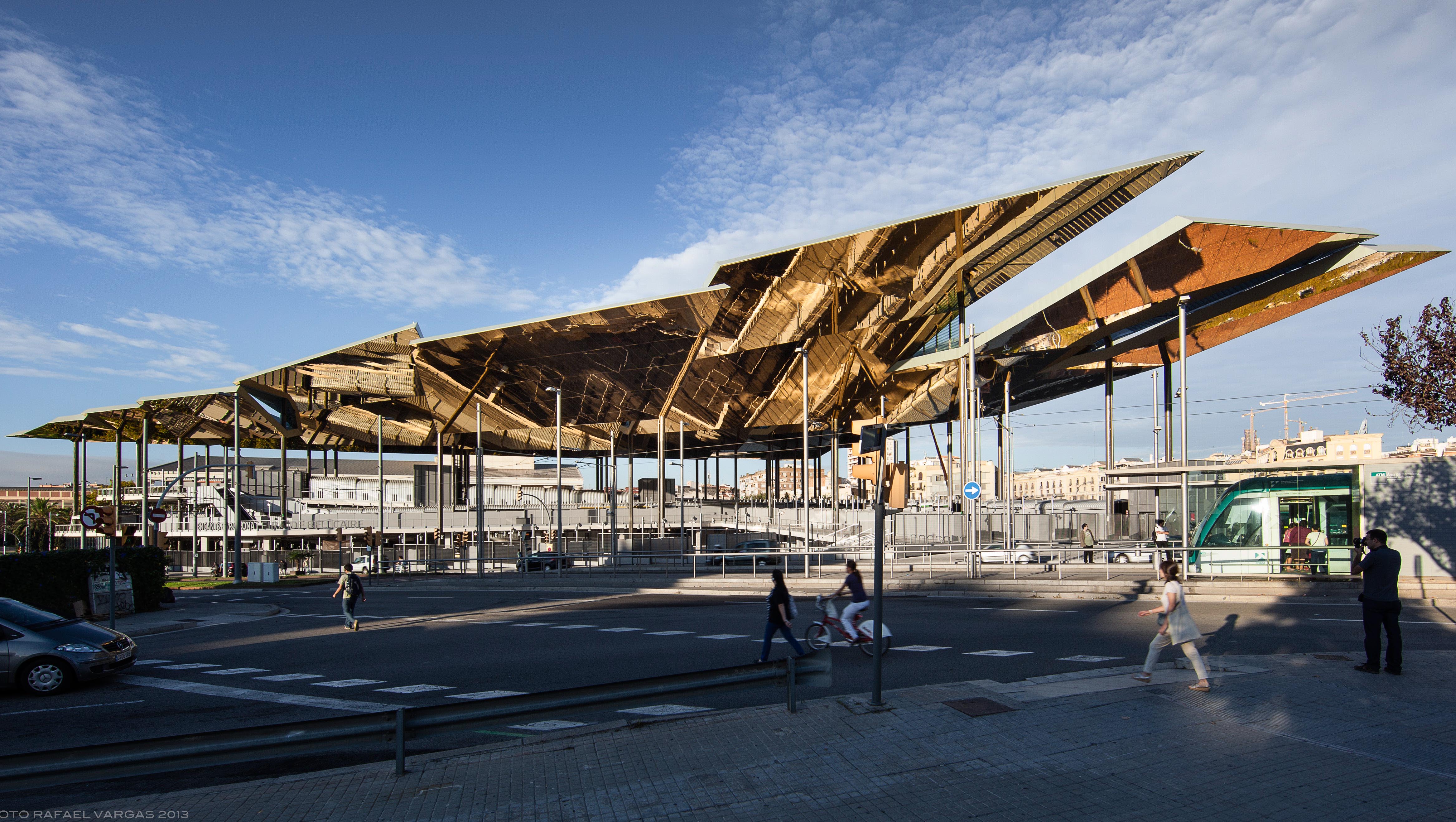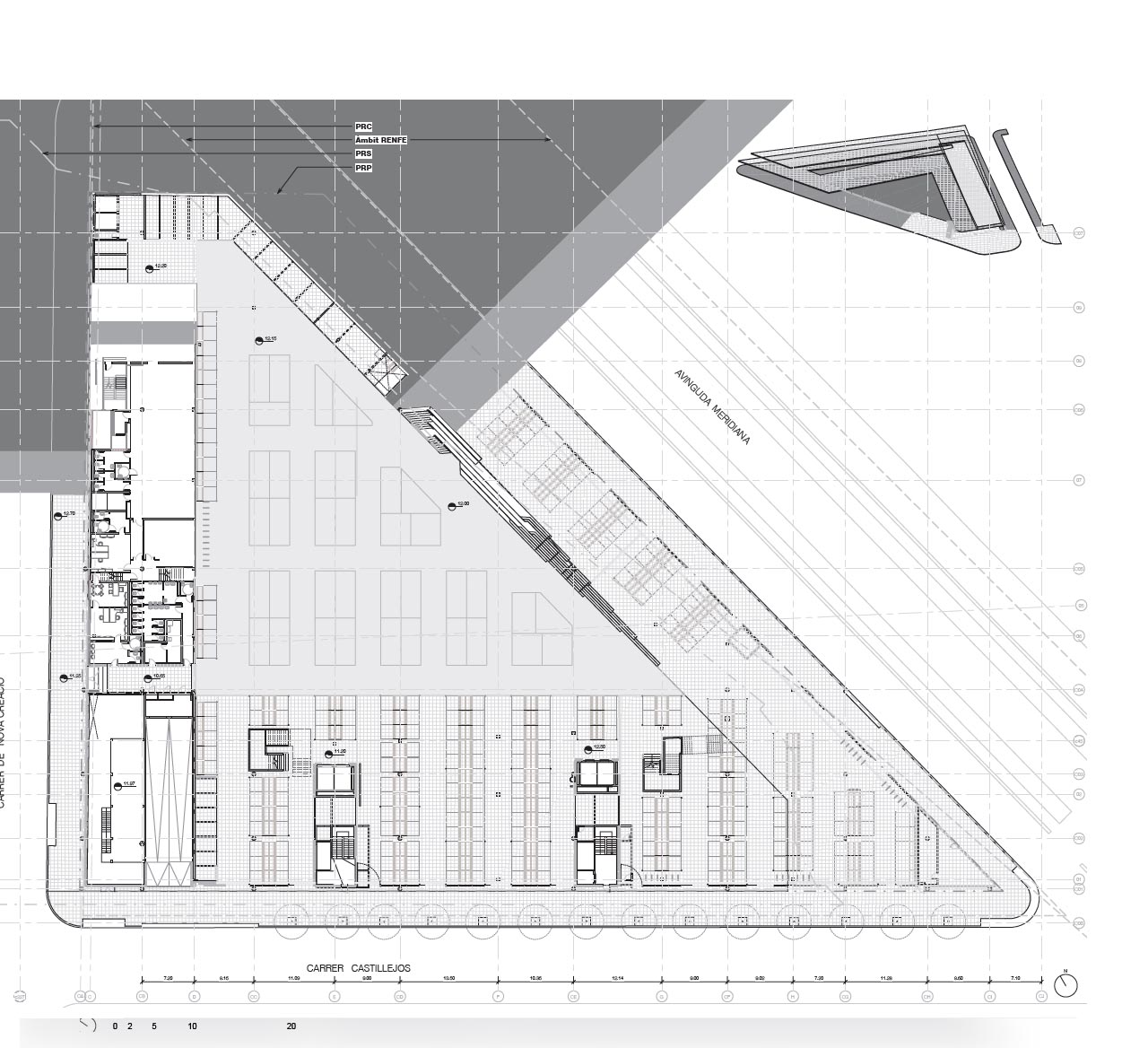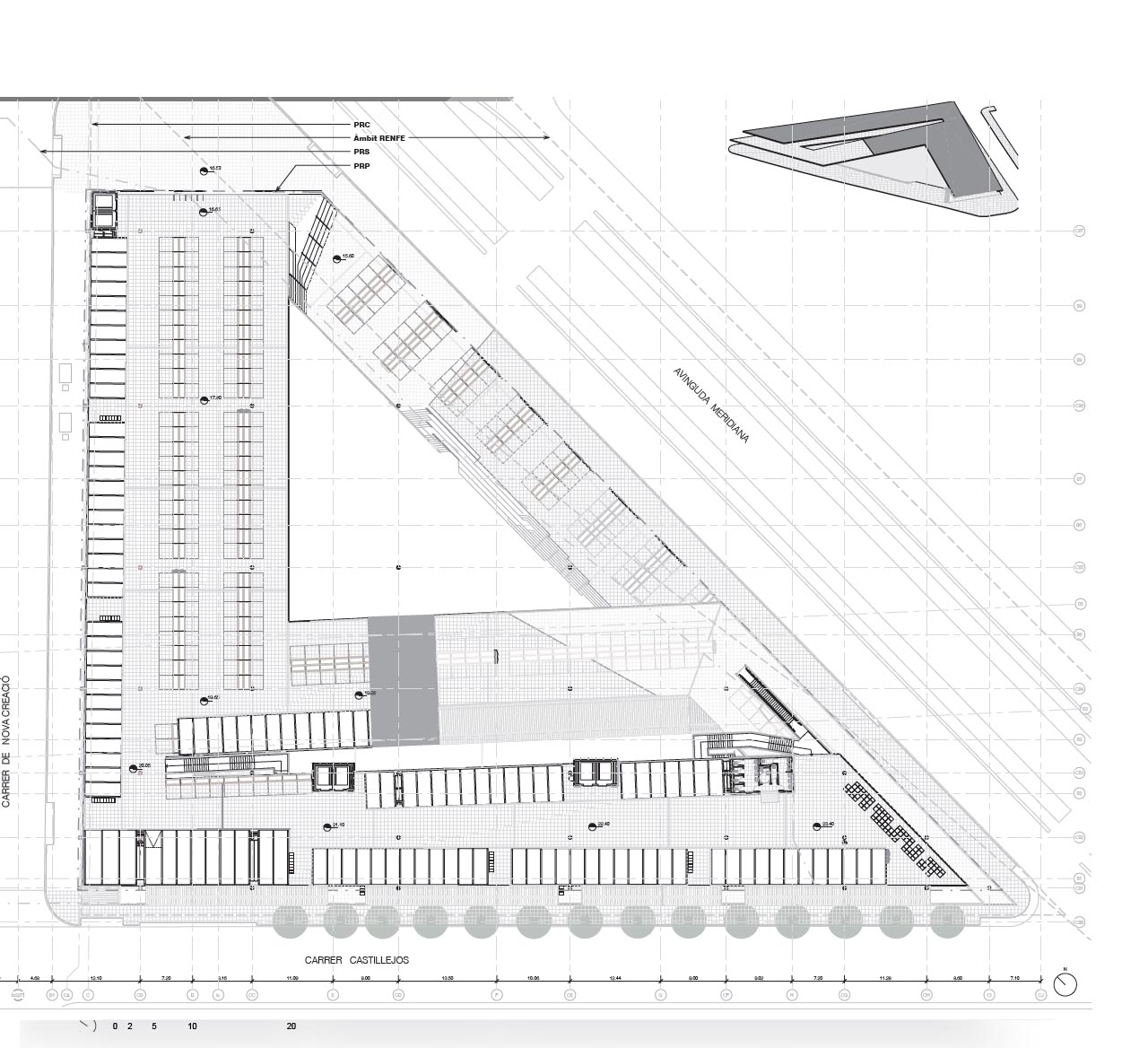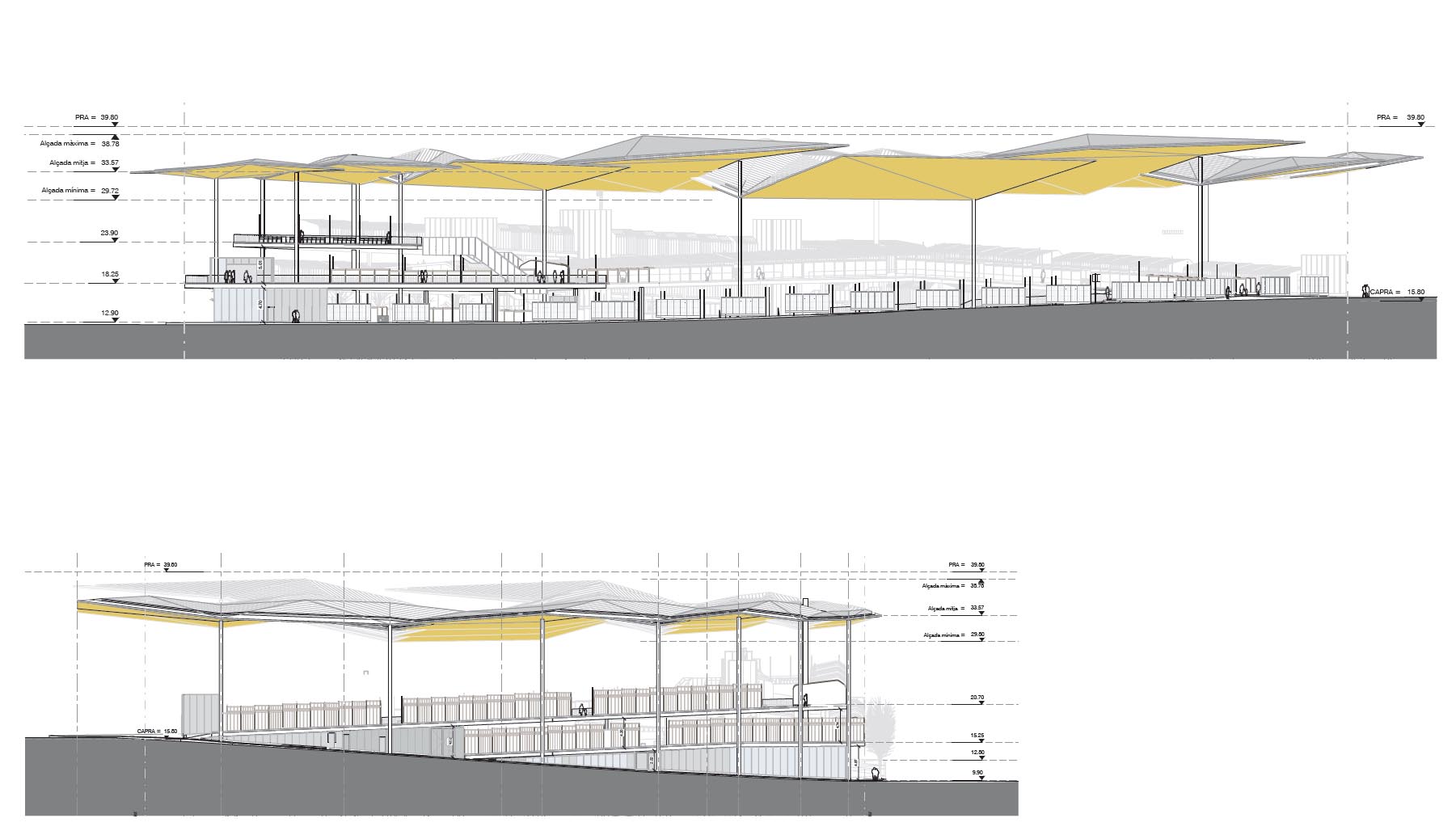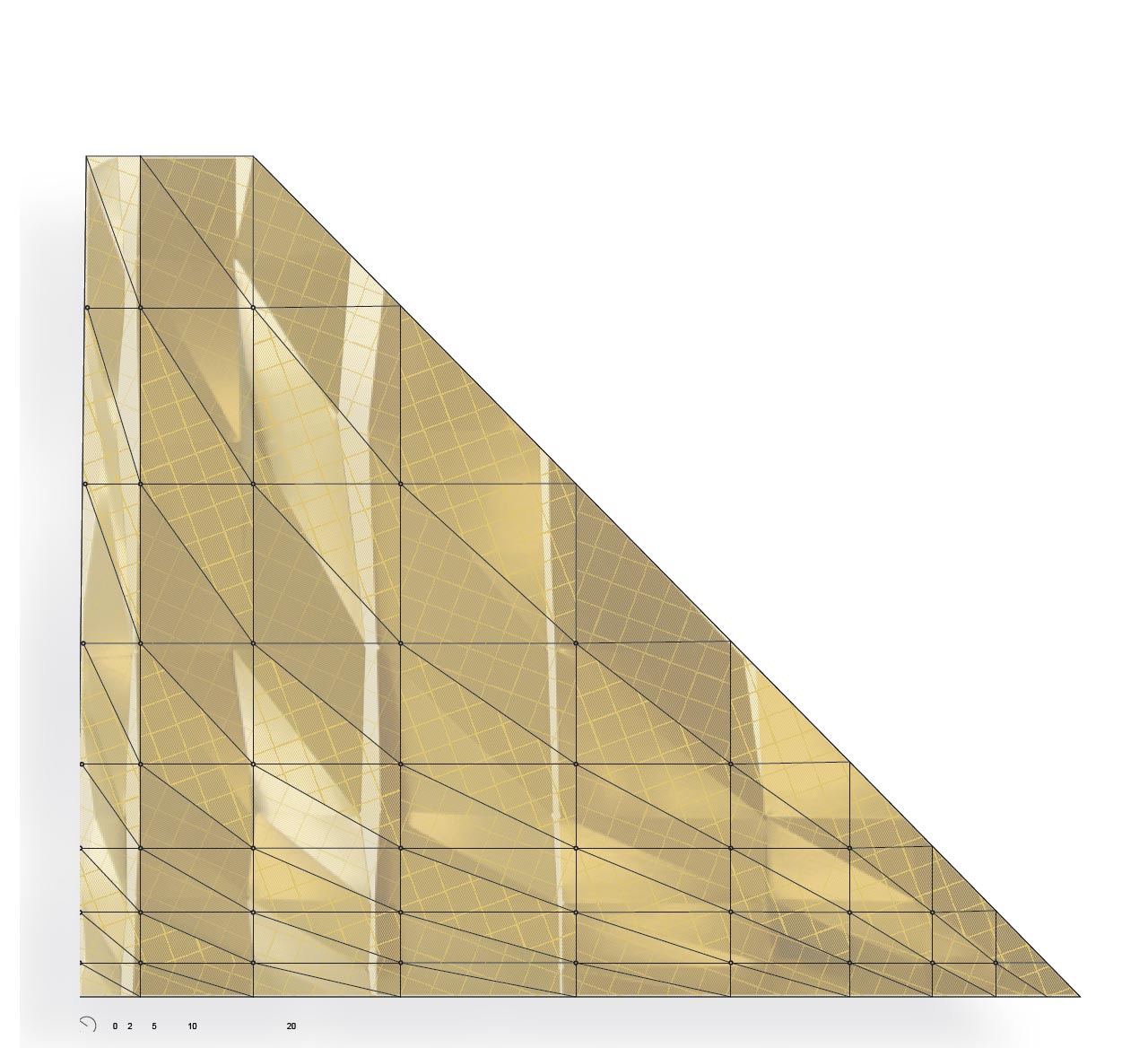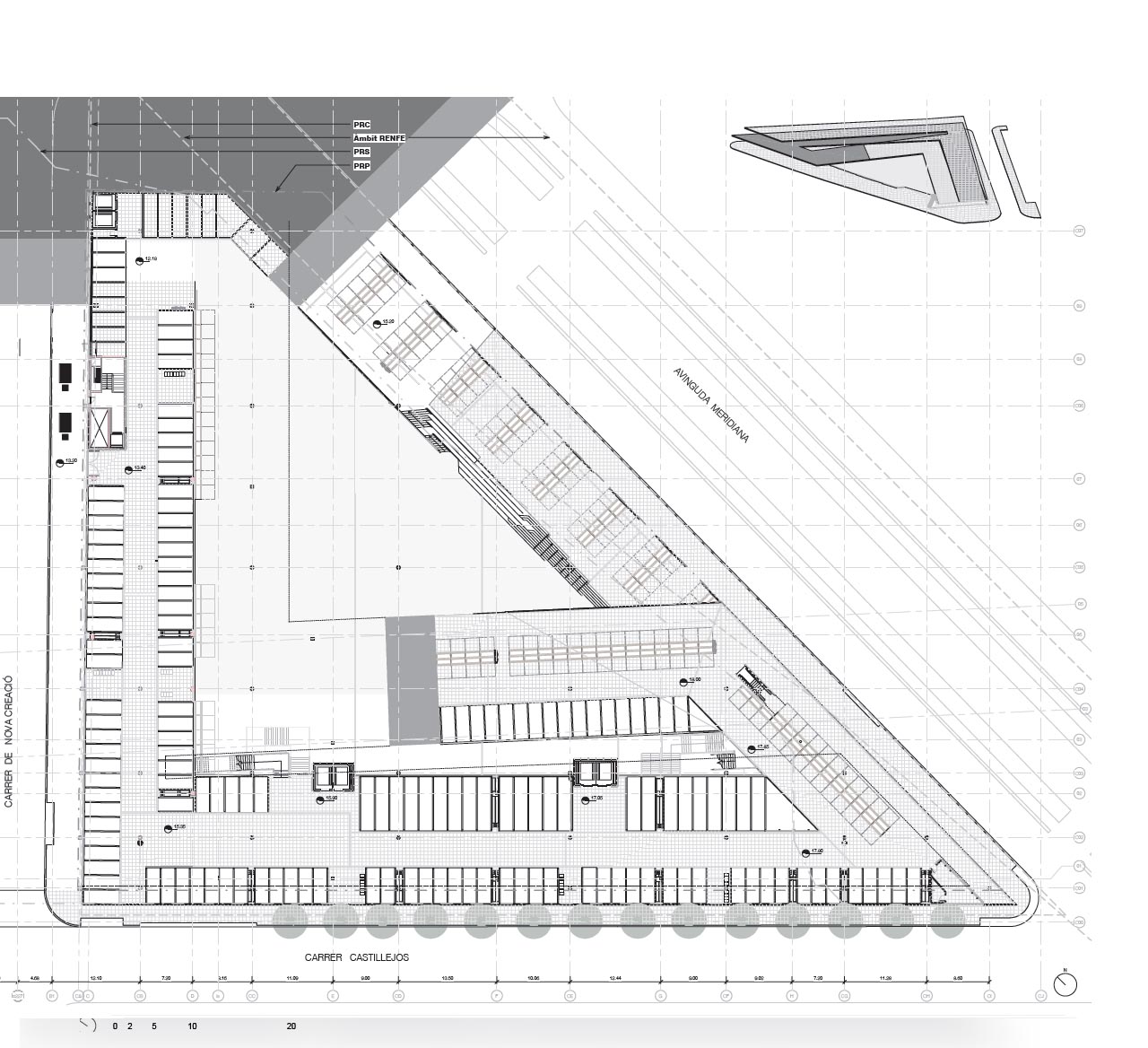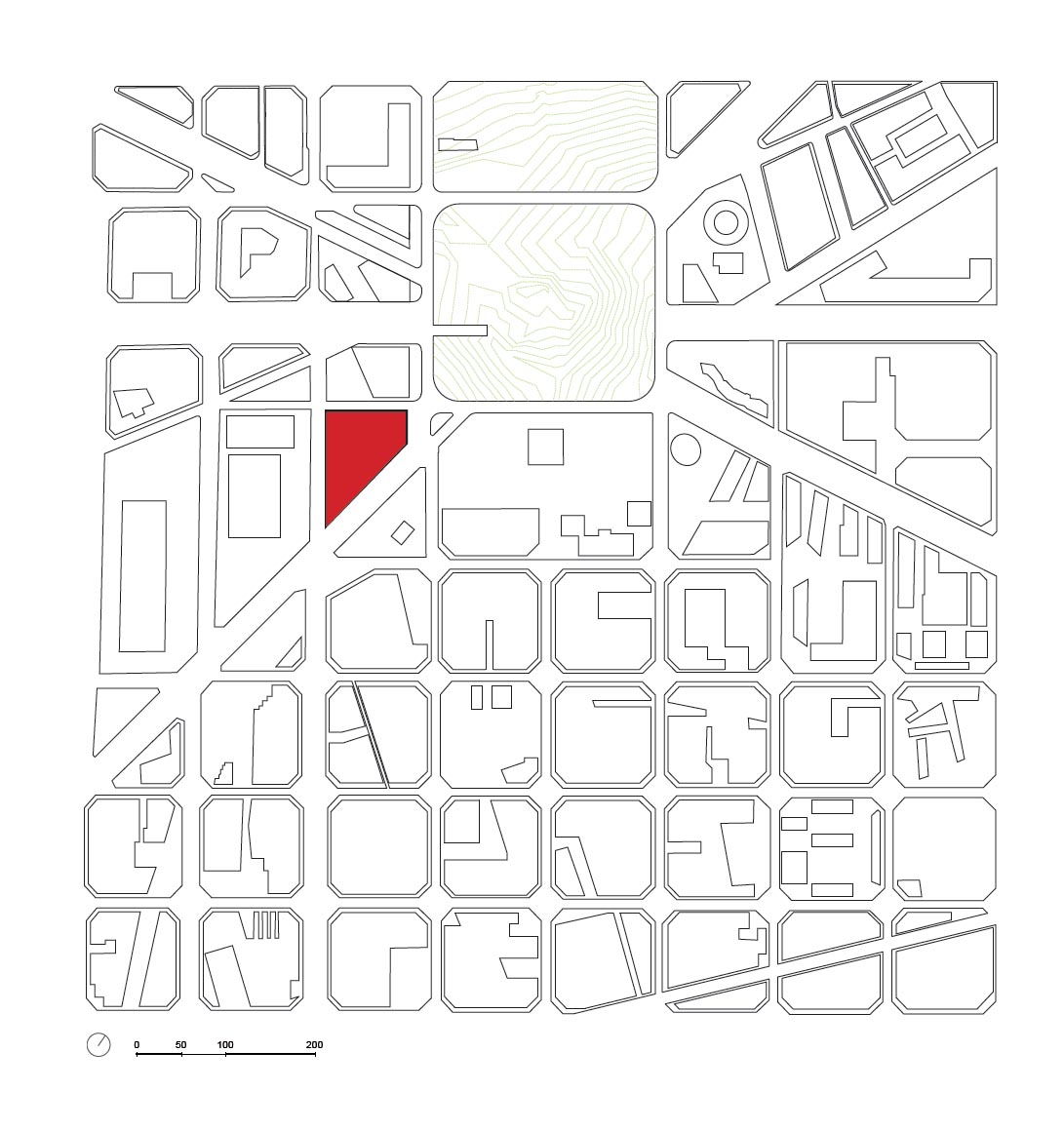Previous state
Like Portobello Road in London, El Rastro in Madrid or Porta Portese in Rome, Els Encants is a famous antiques and second-hand market. In the open air, with informality and transitoriness as its governing principles, Els Encants is the setting for an outdoor trade in rejected or abandoned goods, which regain value in the claims of dealers settled between hullabaloo and precariousness. Over more than five centuries, the market has occupied a considerable number of sites in Barcelona but has always kept the same name. It also kept its marginal, sprawling character, which made it difficult to regulate and uncomfortable wherever it settled. This was why, perhaps, in 1928, a year before the city was to be the venue for the World’s Fair, it was moved to the plaça de les Glòries, a square which, despite being the point of intersection of three main roads, never attained the central importance that Ildefons Cerdà believed it would have when he planned the Eixample neighbourhood.The market survived almost ninety years on vacant ground covering an area of fifteen thousand square metres, in a hollow which was badly incorporated into its surroundings on the western side of the square. With reforms carried out before the 1992 Olympic Games, the square was transformed into a raised traffic junction, which might have fitted better into the city outskirts than into what should have been an urban centre. This was quickly followed by projects for a thoroughgoing overhaul which, aiming to make a true metropolitan centre of Les Glòries, assumed that Els Encants would have to be moved elsewhere. However, none of the plans went ahead and, meanwhile, prominent, freestanding buildings such as the National Theatre of Catalonia, the Design Museum and the Agbar skyscraper populated the southern and eastern sides of the square, holding out the possibility of its longed-for prominence in the metropolitan fabric. Nevertheless, despite the more than fifty thousand visitors every week, making this of the most popular and cost-effective establishments in the municipal markets network, all these changes took place around Els Encants, which was left with its rundown installations and permanent uncertainty about its future.
Aim of the intervention
In 2008, the Barcelona City Council finally guaranteed that Els Encants would become part of the new Les Glòries, in a plan that envisaged moving the traffic of the road junction underground in order to make space for a future park with metropolitan scale. The decision entailed renovation of the existing installations, which had to relinquish their marginal character in order to satisfy present-day standards of accessibility, security, signposting and logistics and, in particular, to contribute towards the representative nature of the new square. The construction work could not interfere with the market activity and it was therefore decided to construct new installations on some public land on the southern side of the square.The new site, barely half the size of the old one, raised serious challenges. It was impossible to continue with the same number of stalls without placing them on different levels, and yet the new Els Encants was to keep its ground-level and open-air market character. Moreover, the nature of small family units which had been dealing in the market for generations had to be respected. The stall holders, many of whom were wary, fearing that they could be excluded with a change in the commercial model, were called to attend meetings and workshops with a view to outlining the programme and obtaining endorsement for the project.
Description
The new Els Encants market is sheltered beneath a giant porch, some twenty-five metres high, which protects vendors and customers from sun and rain. It has taken the triangular form of the block of land it occupies and is a prominent landmark against the otherwise open backdrop of the plaça de les Glòries, where the raised road junction has now been demolished to make space for the future park. Supported by a matrix of very slender pillars, the porch is structured in parallel strips of varying widths and heights. Each strip is broken up into triangular facets of different surface areas and angles and their interior finish, a layer of polished, gilded stainless steel, reflects the activity below like a broken mirror.Beneath this kaleidoscopic ceiling there are one hundred fifty-six stalls and eighty-four shops. They are constructed in the form of closets and cabinets with metal sheets which, in their grey, light neutrality, respect the need for prominent display of the goods on sale. The slabs on which they rest have the solidity of a roadway although they are at a higher level in relation with the streets around the perimeter. They form a gradual, continuous, gently-sloping ramp spiralling around a clear central space where early-morning auctions are held. This means that the stalls can be piled on three levels without losing visual contact with the square or being enclosed inside a walled structure. Despite the reduction of the market’s surface area, almost ninety-two per cent of the previously registered three hundred and fifteen businesses have continued their activity in the new market.
Assessment
Despite the official figures, it is possible that the high degree of informality in the old Els Encants market means that it will be impossible to discover the extent to which the more precarious vendors have been expelled, which would be a lamentable result in a public building that has cost fifty million euros. Apart from data, there are many critical opinions about the qualitative changes in the items now being sold by some of the new businesses, and in the nature of the human scene comprised by today’s buyers, among whom the proportion of tourists has risen considerably. In any case, there can be no doubt that the market is the result of a decision of the public administration to defend a commercial model which, although very old, is far from being obsolete. While European cities suffer the ravages of deindustrialisation and consumerism, the flea market offers them a sustainable and democratic alternative. This is a lively civic space, open to everyone, a meeting place where exchanges can take place and the less privileged members of society can buy and sell recycled goods that other people would discard as rubbish. A porch without facades suits this model and counters the big shopping malls that close in on themselves and empty the streets of human activity. It is to be hoped that, unlike its predecessor, the future plaça de les Glòries will take profit of the vitality offered by the new Els Encants market.David Bravo Bordas, architect.
[Last update: 02/05/2018]


